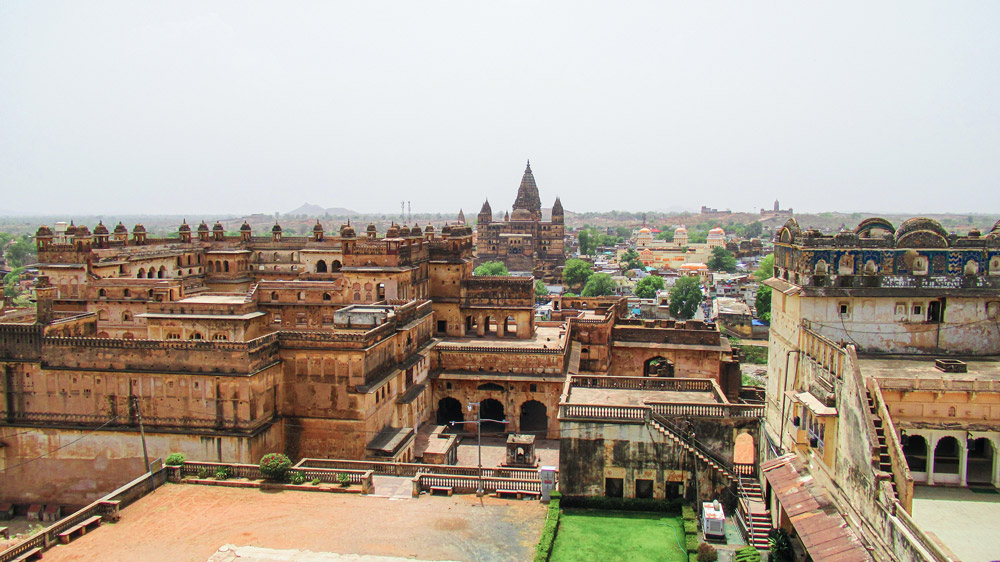A recent trip I took from Pune to Shirdi, courtesy of the Savaari I booked, took a turn for the surreal when I made a pit stop. Now, if you’ve ever seen a suspense thriller, you know nothing ordinary ever happens in small villages! I needed to withdraw some cash, so I asked my driver Alok Bhaiya to drop me off at a bank there. But what I saw next was utterly unbelievable. This bank didn’t have a door!
As we pulled into the village, it was dressed like your typical Indian pilgrimage site – red flags billowing, marigold garlands dripping from every possible surface. But then, as my eyes drifted over the quaint, picturesque homes and flats, I realised something was missing. Every house, small or large, lacked a door. Coming from a city where I’d developed the habit of checking my door lock at least four times before hitting the sack, this was just mind-blowing. Perplexed by the sight, I turned to Alok Bhaiya, probing if he too found the sight unusual. His response startled me further. “In this village, houses have no doors. Locks? Out of the question. A community of 4,000 odd people resides here, living on trust.”
Trust? For a fellow plagued with trust issues, this was as comprehensible as quantum physics.
Eager to learn more about this locked-door phobia, I struck up a conversation with a local vendor selling Prashad. On asking how the villagers managed to sleep at night without a 6-inch steel door separating them from the world, he replied, “This is Shani Shingnapur. We are people of honesty and undying faith in Lord Shani. He will punish anyone who attempts theft. Even our bank does not know the need for a lock. Our village has an almost non-existent crime rate!”
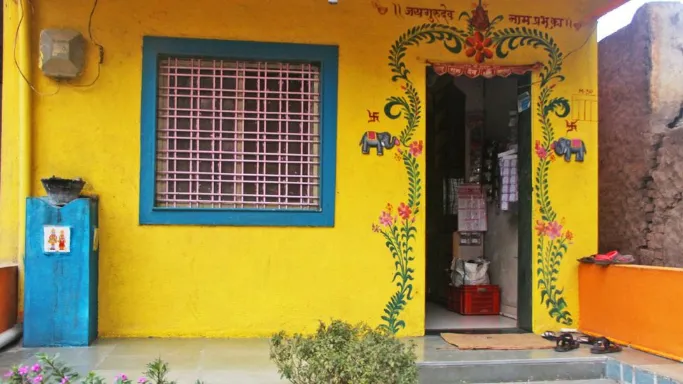
Eternal watcher – The deity of Shani Shingnapur
As I walked around the village, I saw a beautiful temple, The Shani Shingnapur Temple. It is believed to be a “jagrut devasthan”, meaning that a deity still resides in the temple icon. I learnt that the deity here is “Swayambhu” (Sanskrit: self-evolved deity) which emerged from earth in the form of a black, imposing stone.
Though no one knows the exact period, it is believed that the Swayambhu Shanaishwara statue was found by shepherds of the then-local hamlet. It is believed to be in existence at least since the start of Kali Yuga. But I wondered, how did the strong faith of the presiding deity lead to people surrendering their domestic security? I dug around and asked locals about the story.
The legend of Lord Shani – A divine manifestation
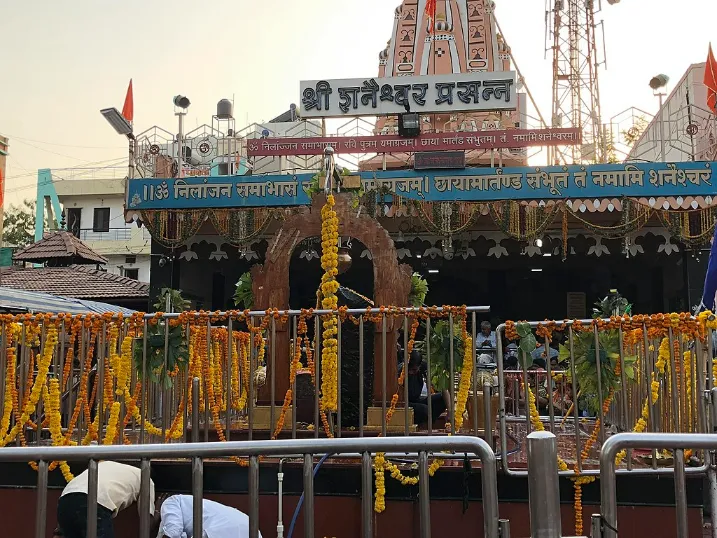
An intriguing lore passed down through generations held the answer. Legend has it that when a shepherd accidentally prodded the black stone with a pointed rod, it started bleeding. The spectacle left the villagers astounded and soon a crowd had gathered around this mystical stone. That very night, Lord Shaneeshwara appeared in a dream to a devout villager.
He revealed himself as the shepherd’s black stone and instructed the shepherd to honour him without building a traditional temple. For him, the entire expanse of the sky was a fitting canopy, and he was content being worshipped under it. He commanded the shepherd to conduct daily rituals and offer ‘Tailabhisheka’ every Saturday. And in return, he made a divine promise – to safeguard the village with no doors from any criminal intrusion.
To this day, Lord Shanaishwara’s mandate echoes in the lifestyle of the villagers. You can witness him, standing in the open, beneath the boundless sky. And in adherence to his promise, the village is devoid of doors or locks. Imagine my surprise when I came across the local post office – the guardian of so many secrets – standing bravely doorless. It’s an unprecedented sight, every house, hut, and shop within a kilometre radius of the temple, is stripped of doors and locks.
A testimony to the village’s profound faith and the protective embrace of Lord Shani. As a result of its past, Shani Shingnapur draws a large crowd from all around the nation. With the follower offerings, the shrine has now developed into a fairly big temple spread across a large property.
The village with no doors and zero crime rates?
Gobsmacked is one way to describe it. How on earth could a village with no doors not become a burglar’s paradise? As I wandered, I spotted a bank with a sleek glass entrance. Established in 2011, UCO Bank’s Shani Shingnapur branch was India’s first lockless bank. The one ‘lock’ it did have was a barely noticeable, remote-controlled electromagnetic one—a safety measure that gracefully tiptoed around local sentiments. A doorless police station stood as a testament to the near-absence of crime here.
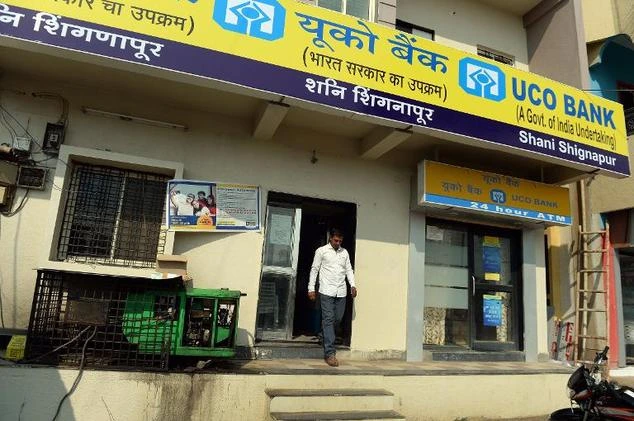
Defying all expectations, Shani Shingnapur had remained nearly untouched by major theft for decades. Sure, a few theft cases had been reported, but they were considered too inconsequential to shake the villagers’ age-old faith. Their homes remained open for hours, even days, without an iota of fear. Stealing was a risky business here—not due to the law, but for fear of divine punishment that could strike in the form of mental illness, blindness, or seven years of bad luck. They use wood panels to deter stray animals, but doors? Not a chance. Rumour has it that a man who dared to fit a door to his house met with an accident the very next day.
Theft allegations and scepticism
Shani Shingnapur had enjoyed a theft-free reputation for centuries. My research, however, led me to a couple of incidents where theft was reported: one in 2010 involving INR 35,000 and another in 2011 for INR 70,000. It is believed that once someone tried to steal from this village and he was punished with blindness immediately. But the villagers dismissed these charges, claiming the thefts took place outside the village.
These incidents give some folks room to argue that the low crime rate owes less to divine intervention and more to the village’s remote location. It will be interesting to see if this centuries-old tradition of doorless homes withstands the test of time in the future.
Takeaway from the doorless village
To say that my visit to Shani Shingnapur was an eye-opener would be a drastic understatement. In my wildest dreams, I never thought I would set foot in a village devoid of doors. But, witnessing the residents’ unshakeable faith first-hand was an experience like no other. Some people held their belief system with such unwavering confidence that they put their homes, their valuables, and their entire lives on the line.
There was something incredibly humbling and humanizing about it all. This experience compelled me to ponder on the simple yet profound truth of human connection and trust, something we often take for granted in our busy, city lives. So, if you’re planning a visit to Shirdi, I urge you to take a detour on your way back and explore Shani Shingnapur. It’s not just a village with no doors; it’s an unforgettable experience, a journey that’s as much about introspection as it is about exploration. Trust me, you won’t leave the same person you arrived as.
The significance of Shani Shingnapur Temple
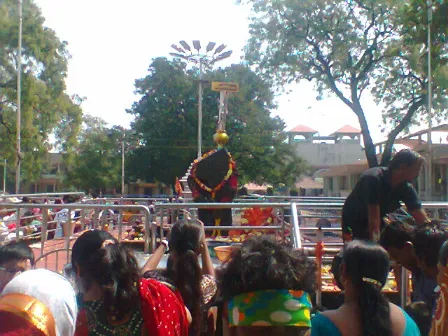
The Shani Shingnapur Temple stands as one of India’s most revered shrines to Shani, the deity associated with the planet Saturn. Here are a few key reasons the temple holds such importance:
- Barrier Breaker: People flock to this temple in droves to seek Lord Shani’s blessings for overcoming obstacles and difficulties in their lives. His divine intervention, they believe, can clear their paths and smoothen their journeys.
- Guardian Force: Devotees believe that Lord Shani shields them from malevolent forces, bad luck, and negative energies. Worshipping him at the Shani Shingnapur Temple, they feel, is their protective armour against all things evil and harmful.
- Healer: Lord Shani is also known for his healing powers. He is believed to alleviate suffering and cure illnesses. Many come to the temple praying for good health and the well-being of their loved ones.
- Justice Bringer: As the God of justice, Lord Shani attracts many to the temple in search of fair outcomes in legal or personal matters.
- Spiritual Hub: The Shani Shingnapur Temple is a hotspot for spiritual seekers who find solace, tranquillity, and a chance to connect with their inner selves within its sacred premises.
Festivals and celebrations at the Shani Shingnapur Temple
The temple is the centre of grand celebrations that infuse life into the village, especially on Saturdays, Shani Amavasya, and Shani Jayanti. Here are some of the major festivals celebrated at the temple:
- Shri Shaneshchar Jayanti: This festival celebrates the birth of Lord Shani. A week-long celebration marked by continuous chanting of Shani Dev’s name and recitation of the ‘Granthraj Dnyaneshwari Parayan’.
- Aashadi Ekadashi: This annual festival, initiated in 1991, sees a grand procession carrying Shaneshwar’s palanquin from Shani Shingnapur to Pandarpur. Devotees partake in various rituals, making it a vibrant community event.
- Ekanaathi Shashti: Similar to Aashadi Ekadashi, Ekanaathi Shashti involves a grand foot procession of Lord Shani’s palanquin from Shanishingnapur to Paithan. It’s a lively event that brings together trustees and devotees alike, adding to the festive spirit of the village.
How to reach Shani Shingnapur
To reach Shani Shingnapur, you have different transportation options:
- By Air: The closest airport to Shani Shingnapur Temple is Aurangabad Airport, which is about 90 kilometres away. Alternatively, you can fly to Nashik Airport (144 kilometres) or Pune Airport (161 kilometres). From Nashik Airport, you can easily hire an airport taxi to reach Shani Shingnapur.
- By Road: The temple is well-connected by road, and you can find buses from major destinations in Maharashtra like Shirdi, Rahuri, Ahmednagar, Pune, Vashi, and Mumbai. Travellers usually book a cab from Pune to Shirdi and stop at Shani Shingnapur enroute.
- By Train: Shani Shingnapur is well-connected to major cities via train, including Mumbai, Pune, Delhi, Goa, Ahmedabad, Bengaluru, Shirdi, and Chennai. The nearest railway station to the temple is Rahuri, which is 32 kilometres away. Other nearby railway stations include Ahmednagar (35 kilometres), Shrirampur (54 kilometres), and Shirdi Railway Station (75 kilometres).
As you prepare to explore Shani Shingnapur, remember to bring along a healthy dose of curiosity and a heart ready for some awe-inspiring moments. To ensure a smooth and enjoyable journey, I highly recommend using the Savaari app. It provides not just a comfortable ride but also a knowledgeable driver who doubles as your local guide. I was bursting with questions throughout my trip, and the driver was not only patient but seemed delighted to share his local insights. So, set out for Shani Shingnapur with an adventurous spirit and an eagerness to discover. You never know how this unique village can surprise you.
Last Updated on October 10, 2023 by blogadmin



